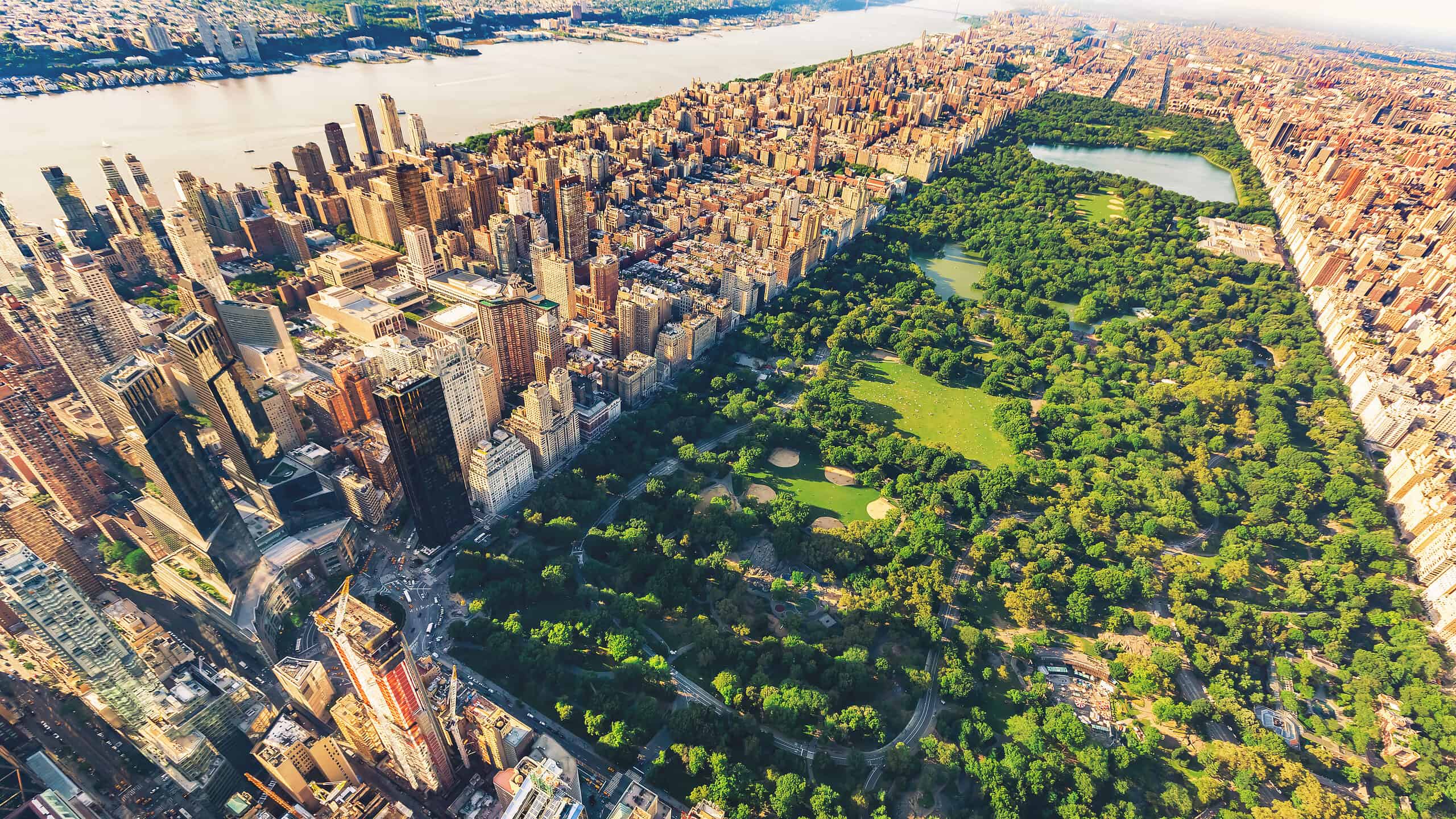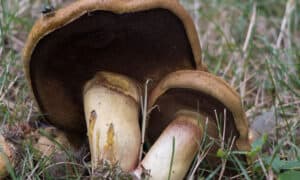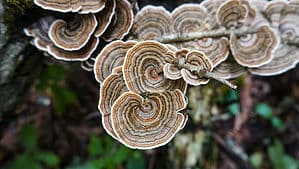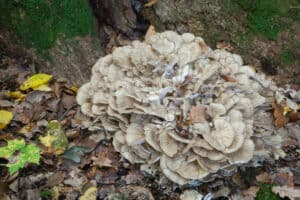Whether you call them shrooms, liberty caps, mushies, golden tops, or some nickname we haven’t heard of, mushrooms are one of the most unique and flavorful wild ingredients you can add to your diet. They’re loaded with healthy nutrients, too, like potassium, riboflavin, pantothenic acid, copper, and antioxidants (to name a few), which all mean they’re great for a naturally balanced diet that can help heal your body and make you feel better, all while tasting delicious.
And if you’re into finding things in nature, you can actually forage for mushrooms in practically every part of the world, as long as you can safely navigate the species and identify the edible from the inedible.
Let’s take a look at the best places you can find mushrooms in the United States, along with a few tips to help your forage safely.
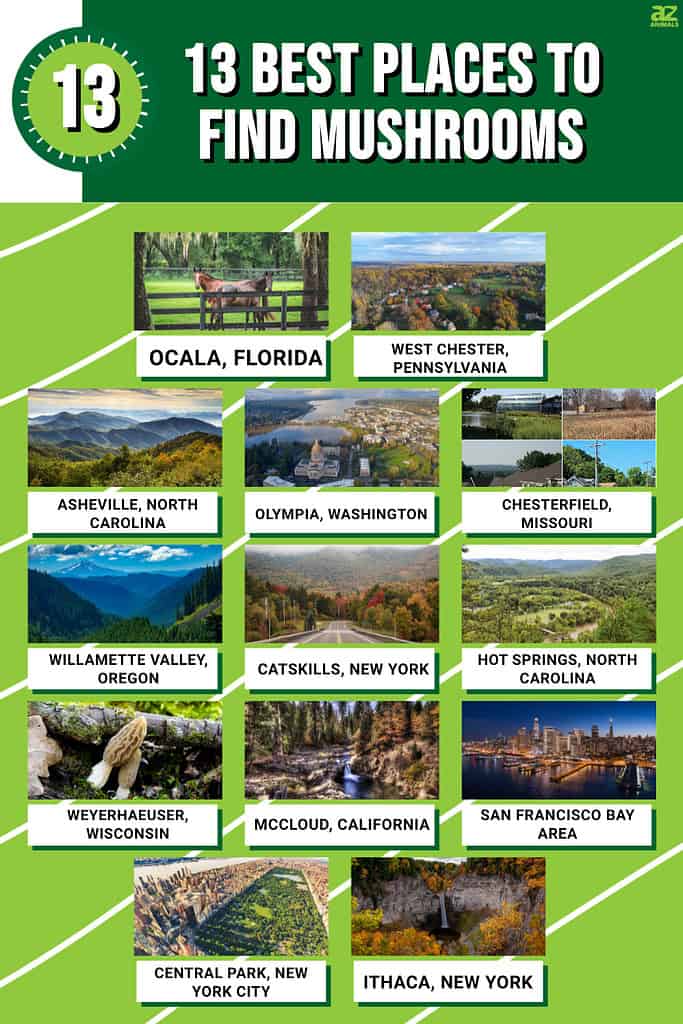
What To Bring When You Go Foraging
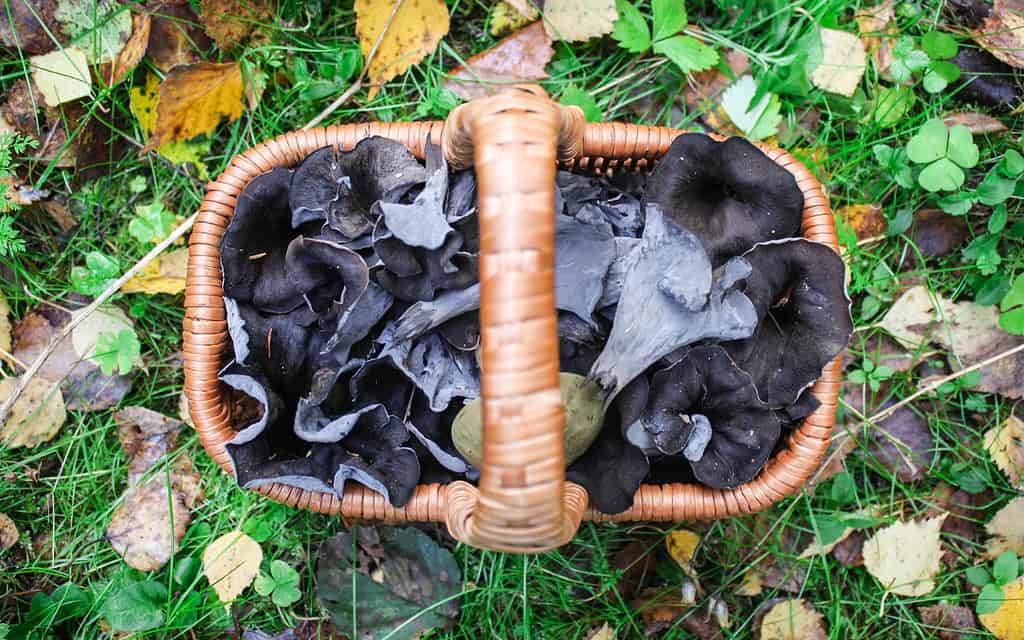
Having a dedicated basket for foraging can be pretty handy.
©Krot44/Shutterstock.com
Be sure to bring along the following when you go foraging.
- A large basket or bin to collect the mushrooms in
- A knife or shears for cutting mushrooms
- A magnifying glass to help make sure you’re identifying the species correctly
- GPS-enabled phone to avoid getting lost
- A notebook and pen or writing app to make notes
- Waterproof shoes and clothing to protect you against the weather and mud
Safety Information For Mushroom Foraging
To safely forage for mushrooms, you’ll need to know how to identify the edible species from the inedible species. If you are able to bring a mycologist (mushroom expert) into the mix, that’s your best for doing this, however, you probably don’t know any experts and will need to rely on other precautions.
Use Apps and Books
The first step in your foraging career is likely to be grabbing some mushroom identification books and downloading some apps that help you identify safe mushroom species. Some of the best apps for this purpose include the Wild Edibles app from Apple or The Book of Mushrooms for Android. If these don’t do it for you, there are many lists out there that will likely reveal the one you’re looking for.
Ask Questions and Take Pictures
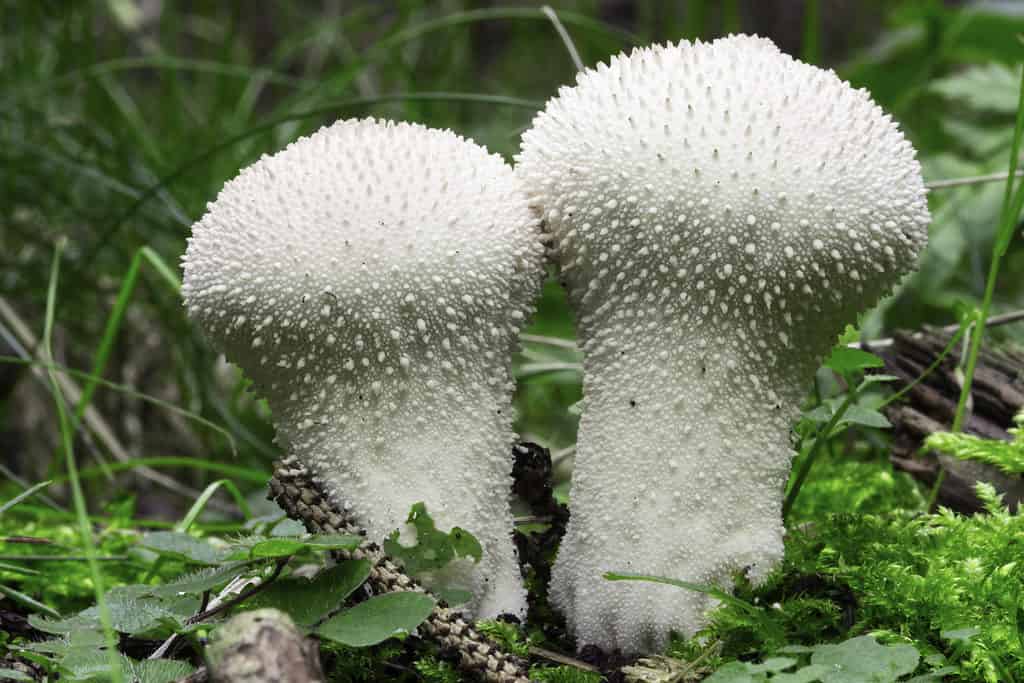
It’s good to ask questions when you can’t recognize a mushroom.
©gstalker/Shutterstock.com
Once you’ve downloaded your nature-found edibles apps, get that camera out and start snapping shots as you forage. If you can clearly and safely identify one species without any doubts, awesome! Cut those and keep going. If, however, you’re not 100%, it’s best to take some pictures, upload them, and ask questions about them. Be sure to make note of where you find them, as well, as you may want to return or warn other newbies off.
Become an “Expert” in One Mushrooms Species
Because there are so many species out there, and so many look-alikes, it’s a great idea to determine the one species you’re going to focus on. Much like the pros at the National Mint study the one true dollar bill to identify forgeries, studying up on a single mushroom species can help you determine which are the real, safe edibles, and which are the unsafe look-alikes. When you’ve mastered this first one, you can move on to the next species, and the next, until you’re comfortable and safe identifying new species on your own.
Join a Foraging Club
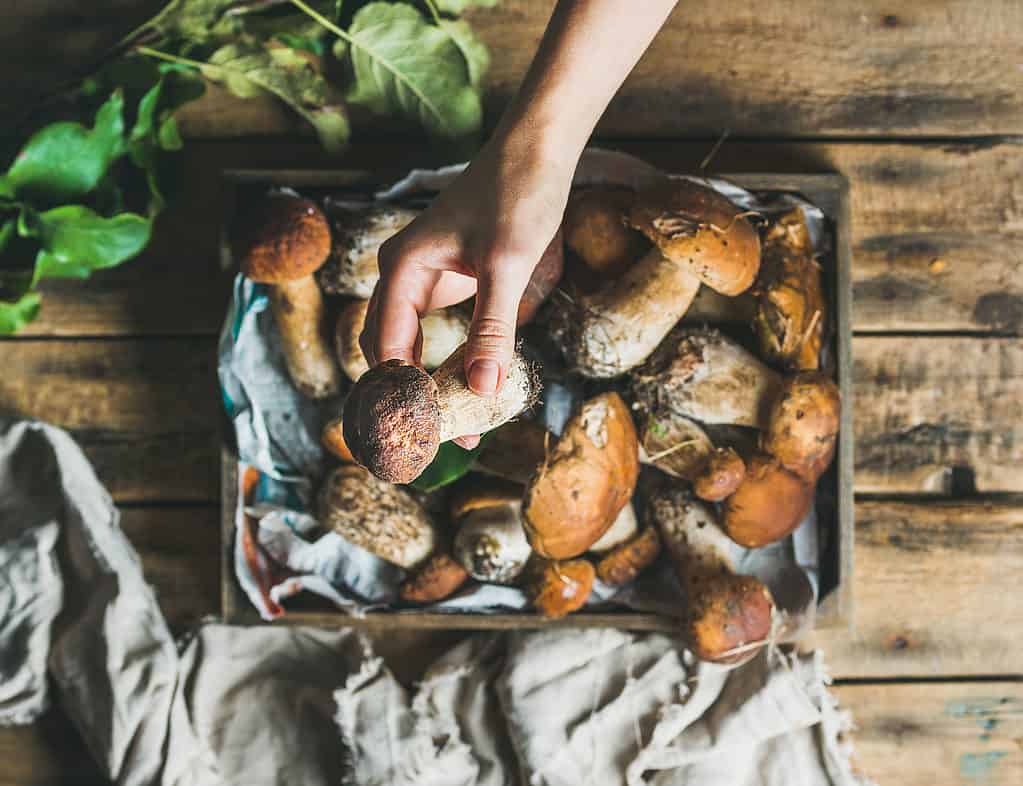
A foraging club can help you identify those safe mushrooms.
©Foxys Forest Manufacture/Shutterstock.com
And if you can find one in your area, joining a foraging club is a great way to pool resources with others for mushroom foraging. They’ll help you identify the edible varieties, add some social to your sphere, and generally increase your knowledge and your home take when you hit the mossy zones.
Tips And Tricks For Mushroom Foraging
Finding the best mushrooms won’t take a lot of brain work, but it will take some planning.
Take Notes as You Forage
When you forage, it’s best to bring along either a phone app for writing or a physical notebook. You’ll want to jot down locations, discoveries, and even favorite moments as you search for your fungi.
Look For Mushrooms After Heavy Rains
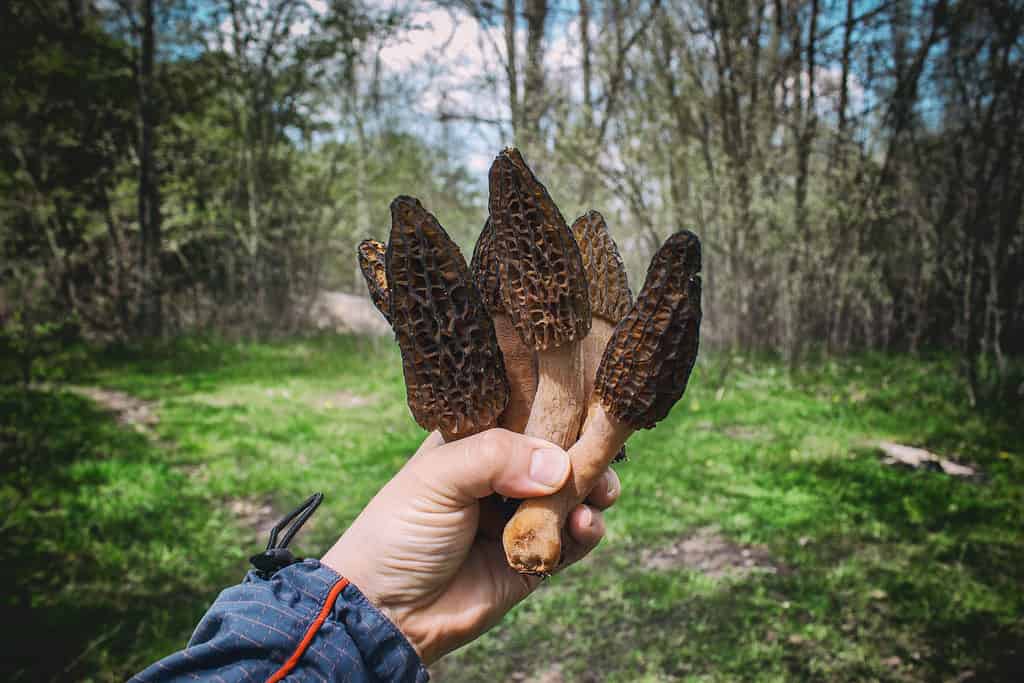
It’s easier to find mushrooms after heavy rains.
©Ramazan Kurdanov/Shutterstock.com
Mushrooms thrive in wet conditions, so they pop up and show off right after heavy rains or when that first rain (beyond a sprinkle) hits post-drought. Look for them in swampy spots, mossy patches, and along bodies of water where they’ll have tons of H2O to thrive on.
Know Which Fungi Species Grow in Your Area
You’ll also want to read up on which species are growing in your area. This will help you know where to look for them, what season to look during, and help you decide which species to get to know really well before you start your foraging adventures.
Find the Right Trees and Move Outward
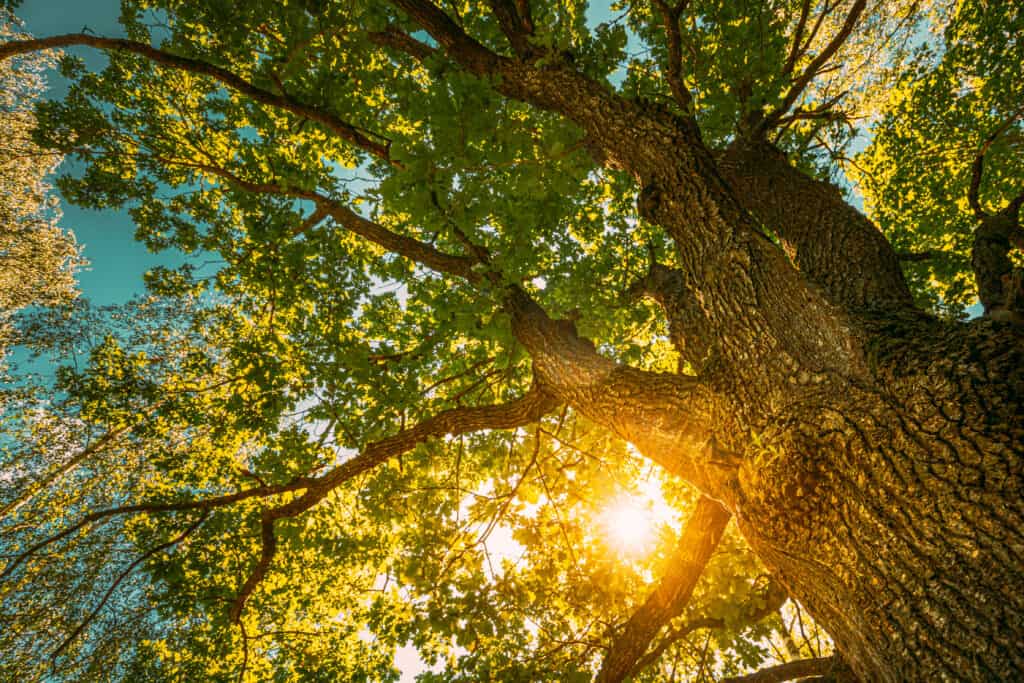
Knowing a mushroom species’ favorite tree can help you find the shrooms much faster.
©iStock.com/bruev
When you’ve identified the mushroom species in your area, you’ll want to also know how to identify their favorite trees. Some mushrooms really love given species of trees, like morel mushrooms love elms and apples, and beech mushrooms love beech trees (thus earning them their nickname).
Don’t Pull Mushrooms Out – Cut Them
And instead of yanking mushrooms up by the roots, be sure to cut them off with a pair of shears or a knife. This means there will be more mushrooms to come back to later on. This is another good reason to make note of where you find mushrooms: you’ll know exactly where to come back for more of the same.
Best Places To Find Mushrooms As A Forager
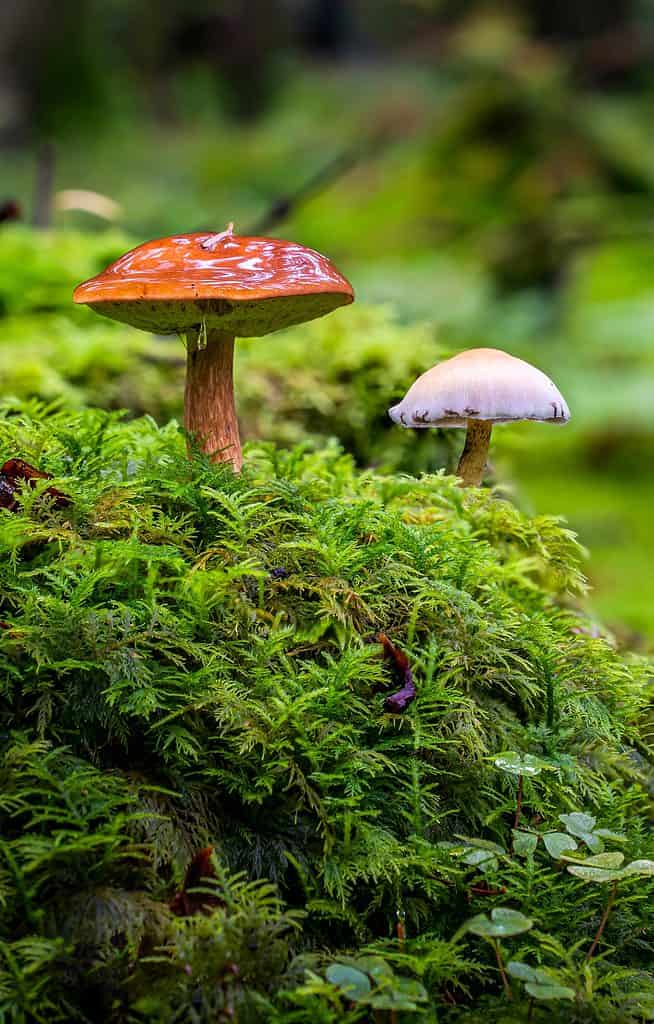
Mushrooms love mossy places.
©Shairaa/Shutterstock.com
Generally speaking, there are certain areas in which you’ll find mushrooms most easily.
- Mossy locations
- Near the right species of trees
- On the edges of forests
- Near or on dead trees
- South-facing hillsides
- Logging areas
- Burn sites
- Old orchards and fruit farms
- Near streams, creeks, and swamps
- In pine forests
- Grazing pastures
13 Best Locations to Find Mushrooms
Let’s take a look at the best specific locations across the United States for finding mushrooms of various species.
1. Ocala, Florida
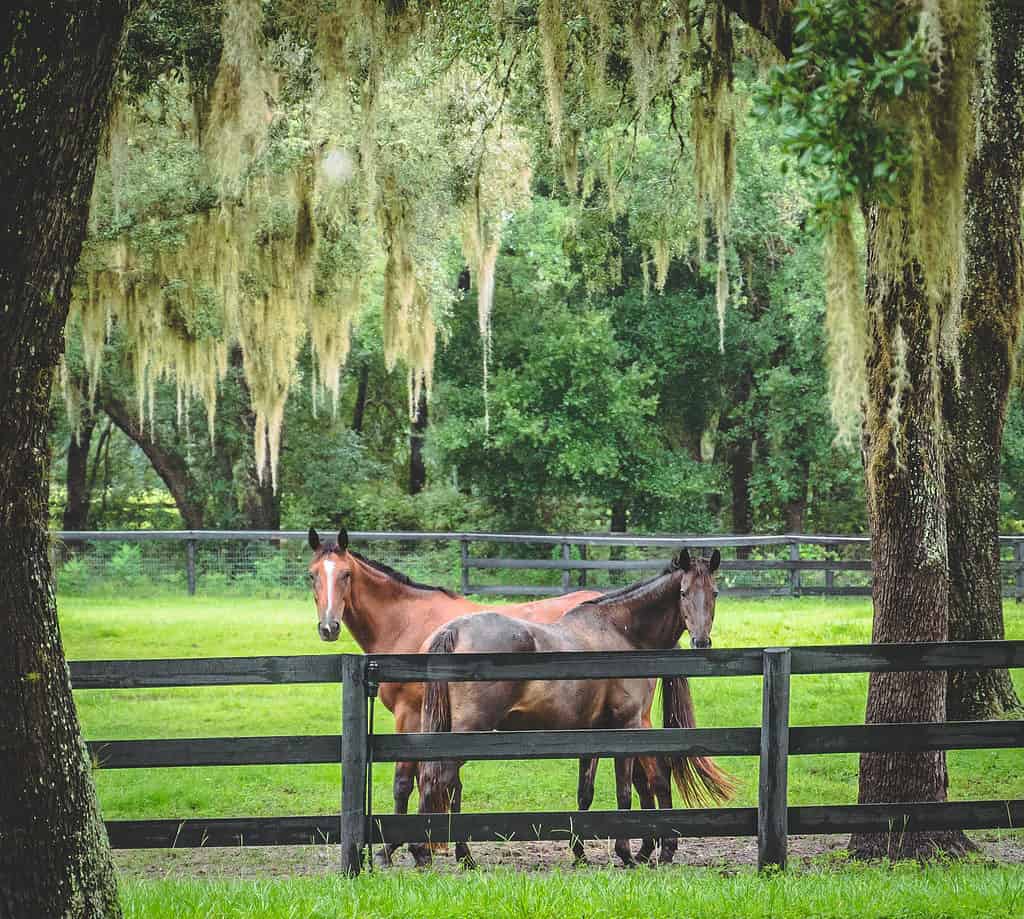
The
horse
capital of Florida, Ocala is actually a prime location for finding mushrooms in the wild.
©Kurt Wehde/Shutterstock.com
Known by locals and equestrians alike as the off-season training grounds for equestrian competitors from around the world, Ocala is a great location to find mushrooms. All those pastures, swamp lands, the National Forest, and the frequent rains all make the locale perfect for foraging. It’s not a large city or even large town, though, so if you plan to trek over, be sure to check hotel availability and book-in in advance if there happen to be any horse-related events on the horizon.
Here you’ll find Reishi, Indigo milk-caps, Chanterelles, Puffballs, and Boletes at the very least.
2. West Chester, Pennsylvania
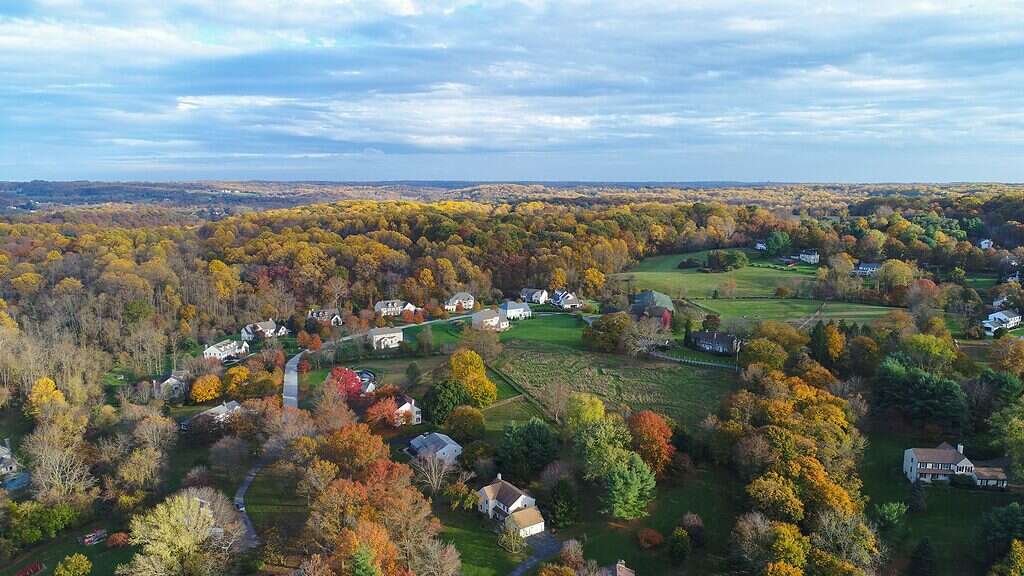
West Chester, PA, dubbed the mushroom capital of the world.
©Padula Aerial Imaging/Shutterstock.com
It might surprise you to know, but West Chester, PA is nicknamed the mushroom capital of the world. Over 60% of the United States mushroom growing occurs in Kennett Square. That’s over 500 million pounds of mushrooms annually that grow in the area.
The area is filled with cultivated mushrooms and wild mushrooms alike, thanks to the cultivation spreading a bit and out into the “wild.” Find Shiitake, oyster, King oyster, Maitake, Pioppino, Cremini, and pompom mushrooms here, among the many other species grown intentionally.
3. Asheville, North Carolina
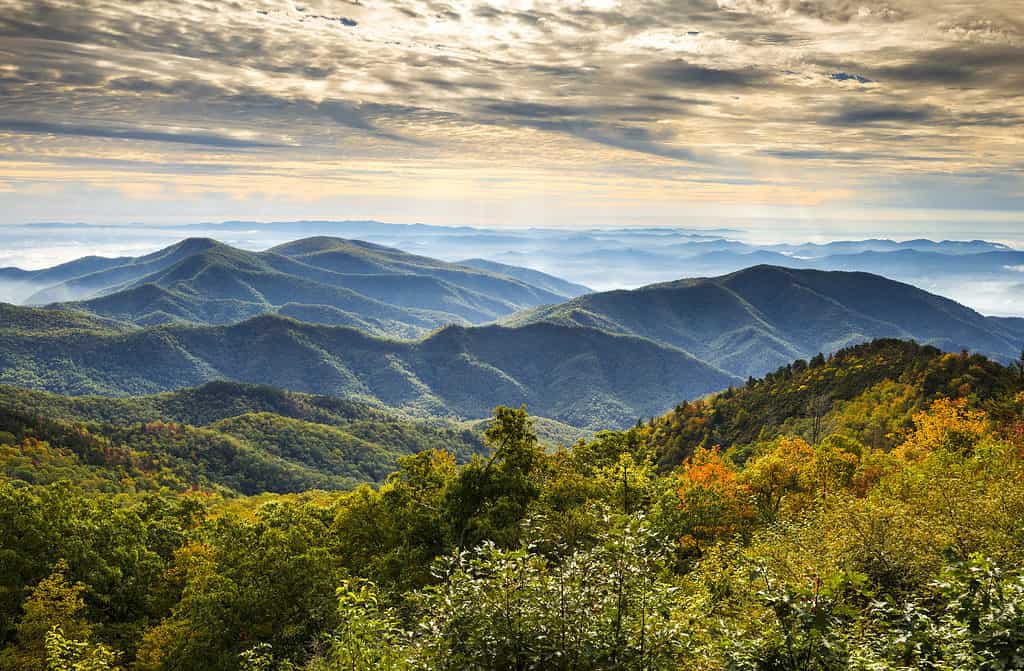
Blue Ridge Parkway overlooking mountains near Asheville, NC
©Dave Allen Photography/Shutterstock.com
People often think of craft brews and wild berries when it comes to Asheville, but the town is also a first-rate locale for foraging for mushrooms. It’s a prime locale for a foraging vacation, too, as you can book a foraging tour, experience forage-to-table restaurants (including the very first of its kind, founded by Alan Muskat), and more.
In Asheville, you’ll find:
- Morels
- Chicken of the Woods
- Chantarelle
- Lactarius
- Hedgehog fungus – or lion’s mane or bear’s head
- Turkey tail
- Maitake
- Oyster
- Reishi
- Shaggy mane
4. Olympia, Washington
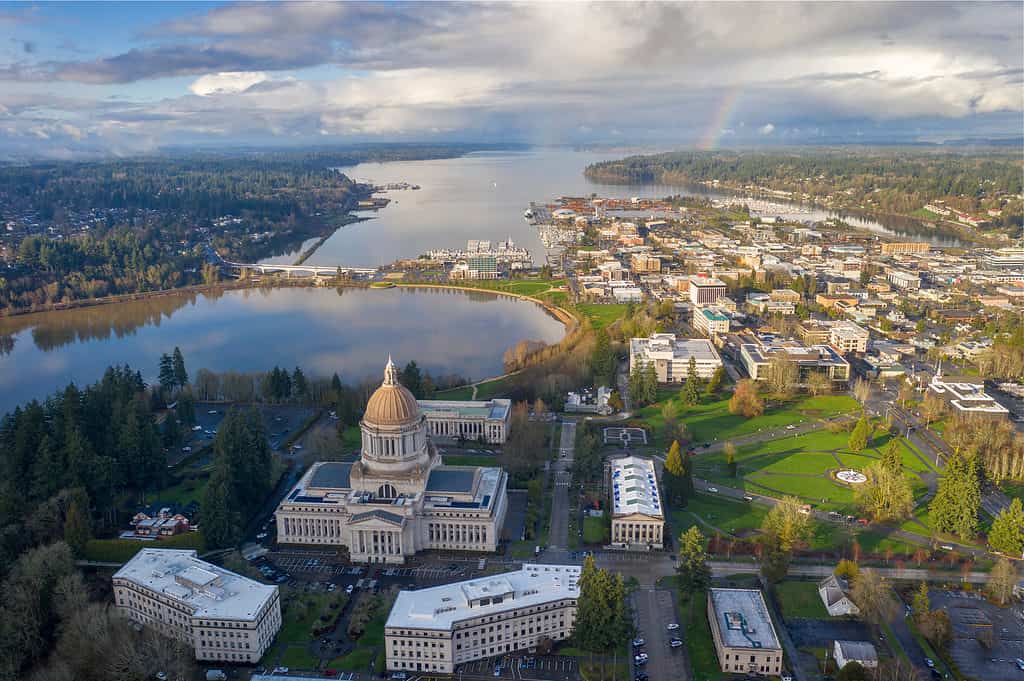
Olympia Washington
©Always Wanderlust/Shutterstock.com
The West Coast has many, many prime locations for foraging for mushrooms year-round. Olympia, WA happens to be home to the Fungi Project, as well, founded by Paul Stamets, for mycologists and mushroom enthusiasts all over. Many species of mushrooms are widely available in WA year-round, with some varieties you may not find elsewhere as easily. Some of the varieties you’ll note in the National Parks include:
- King bolete
- Spring King bolete
- White King bolete
- Birch bolete
- Morels
- Puffballs
- Rosy gomphidius
- Hedgehog mushrooms
- Bear’s head mushrooms
- Toothed jelly fungus
- Oyster
- Fat Jack
- Chicken of the Woods
- Amethyst deceiver
- Deceiver
- Gem-studded puffballs
- Club coral
- Inky cap
- Orange peel fungus
- Lobster mushroom
- Fairy ring mushroom
And many, many other species.
5. Chesterfield, Missouri
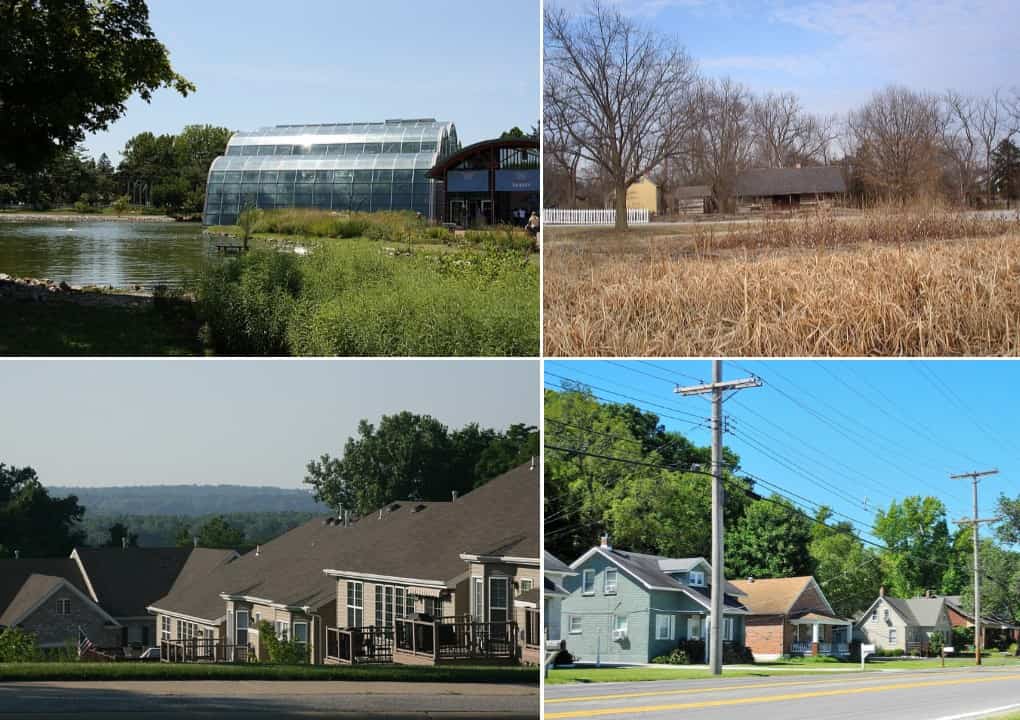
Chesterfield, Missouri is known for morel mushrooms, as well as a variety of other wild species.
West of St. Louis, Missouri, you’ll find Chesterfield and the Missouri Mycological Society with its local chapter. The area is known particularly for morels (and their toxic look-alikes, beware!), but the fertile soil provides a place for many other delicious wild species, including puffballs, shaggy mane, coral mushrooms, chicken of the woods, chantarelles, bearded tooth, oyster, boletes, and hen of the woods.
6. Willamette Valley, Oregon
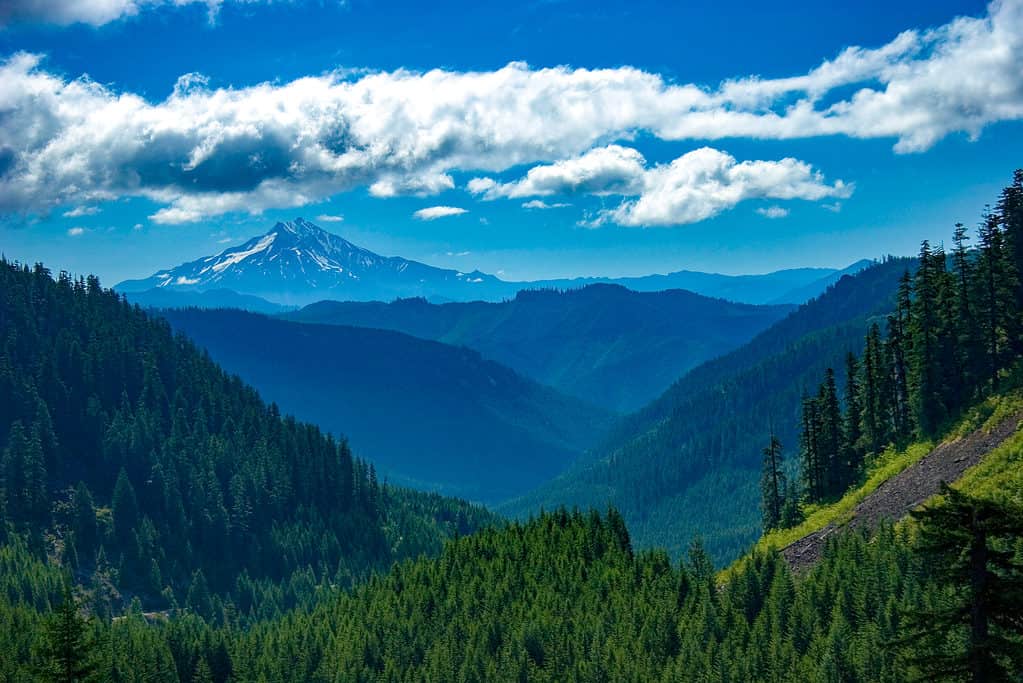
View of Willamette Valley, a prime location for mushrooming.
©Bob Pool/Shutterstock.com
Oregon is another prime location in the United States to find tons of wild mushrooms of many types. The Willamette Valley Mushroom Society is a great resource for finding them, as well as learning more about foraging and safety through their foraging events, presentations, and videos. You’ll likely find chantarelles, porcini, hedgehog mushrooms, lobster mushrooms, chicken of the woods, Oregon polypore, and truffles while foraging.
7. Catskills, New York
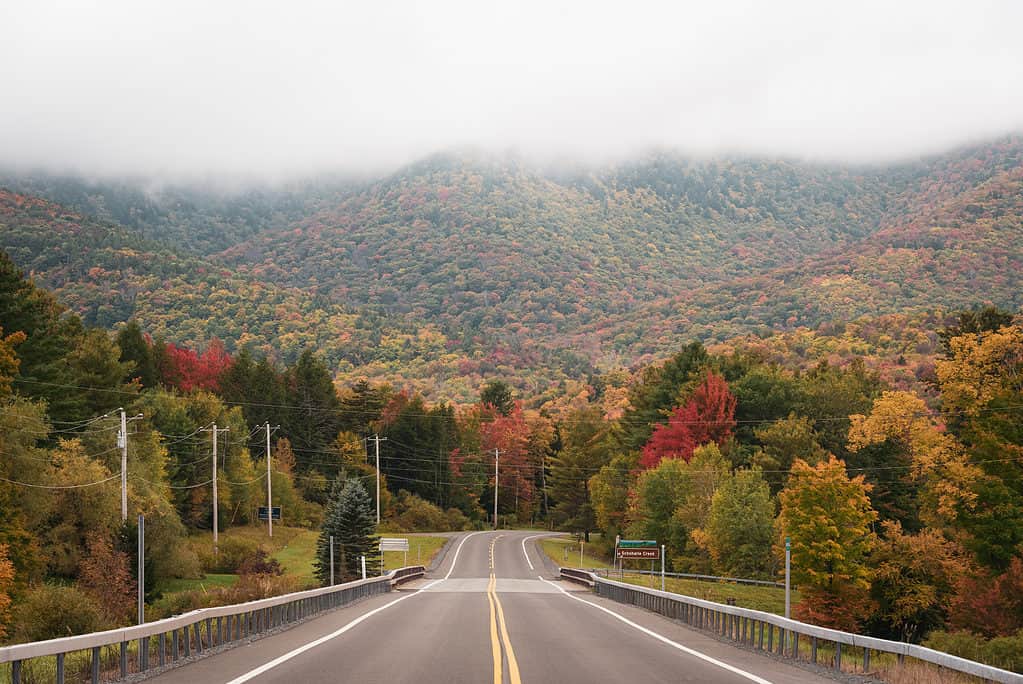
The Catskills are a great spot for vacationing and foraging for mushrooms.
©Jon Bilous/Shutterstock.com
As you might guess from the name, Catskill fungi thrive in this area of New York: the Catskills. You’ll also find many other tempting fungi growing in the wooded areas, including chicken of the woods, chantarelles, morels, oyster mushrooms, puffballs, and many more. Join the Mid-Hudson Mycological Society for mushroom walks and educational events or head out on your own.
8. Hot Springs, North Carolina
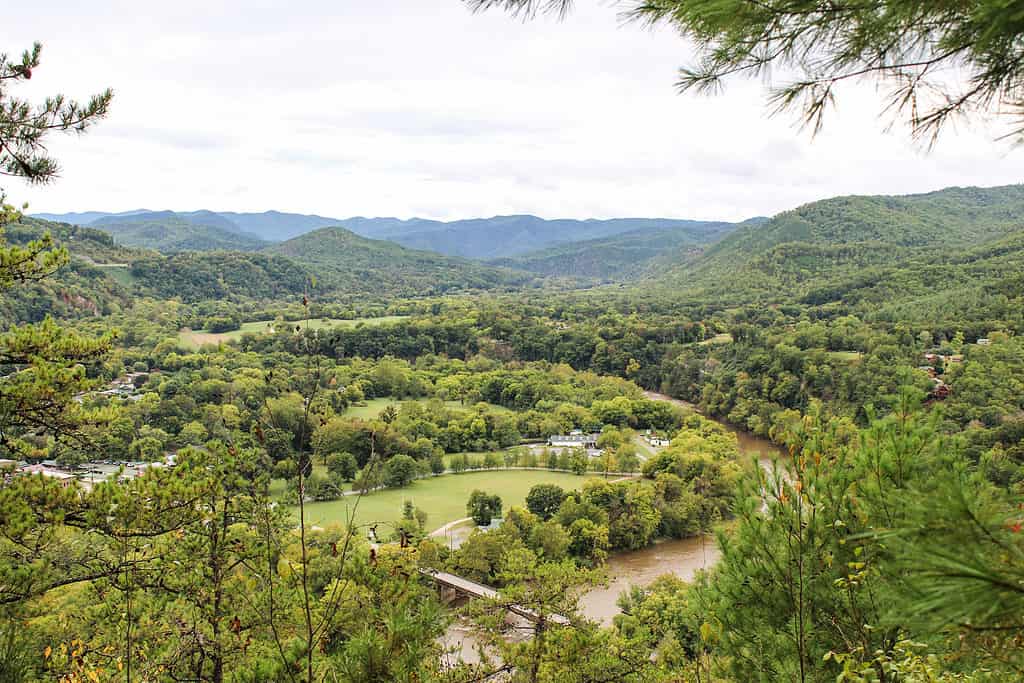
Hot Springs, North Carolina has plenty of foraging opportunities.
©Jennifer Stanford/Shutterstock.com
South of Asheville, you’ll find another mushroom-heavy locale: Hot Springs. The town is located along the Appalachian Trail, so it’s a great place to hike, find mushrooms, and generally enjoy the great outdoors. The densely wooded areas, of course, are the main home to these flavorful fungi, so be sure to go hunting for chantarelle, Lion’s mane, morels, Reishi, oyster, and chick of the woods.
9. Weyerhaeuser, Wisconsin
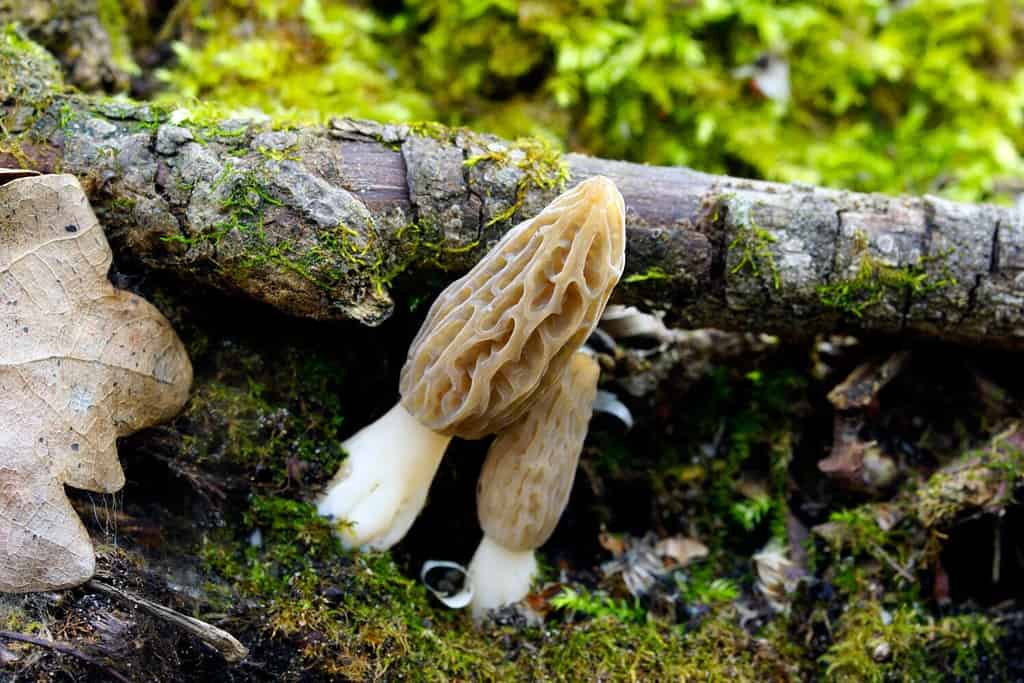
Weyerhaeuser, Wisconsin is home to many varieties of wild mushrooms like these black morels.
©Rudenko Yevhen/Shutterstock.com
There’s good news for Midwesterners, too – plenty of mushrooms to be found in Weyerhaeuser, Wisconsin! The tiny town of just under 250 residents has the splendid Forager’s Harvest, an educational program that helps people better understand how to safely forage for food, including mushrooms. Join them for foraging classes and events from May to October or pop in for events and discussion groups during the winter.
Mushrooms you’ll find in Weyerhaeuser include:
- King bolete
- Giant puffball
- Chantarelles
- Black trumpet
- Shaggy mane
- Earth prunes
- Velutipes
- Hen of woods
- Russula
- Lactarius
- Sulphur Shelf mushrooms
- Blewits
- Fairy ring mushrooms
- Black morels
- Morels
- Oyster mushrooms
- Slippery Jacks
Do note that you’ll likely need a foraging license here, which helps protect and preserve foraging for all residents and visitors now and future.
10. McCloud, California
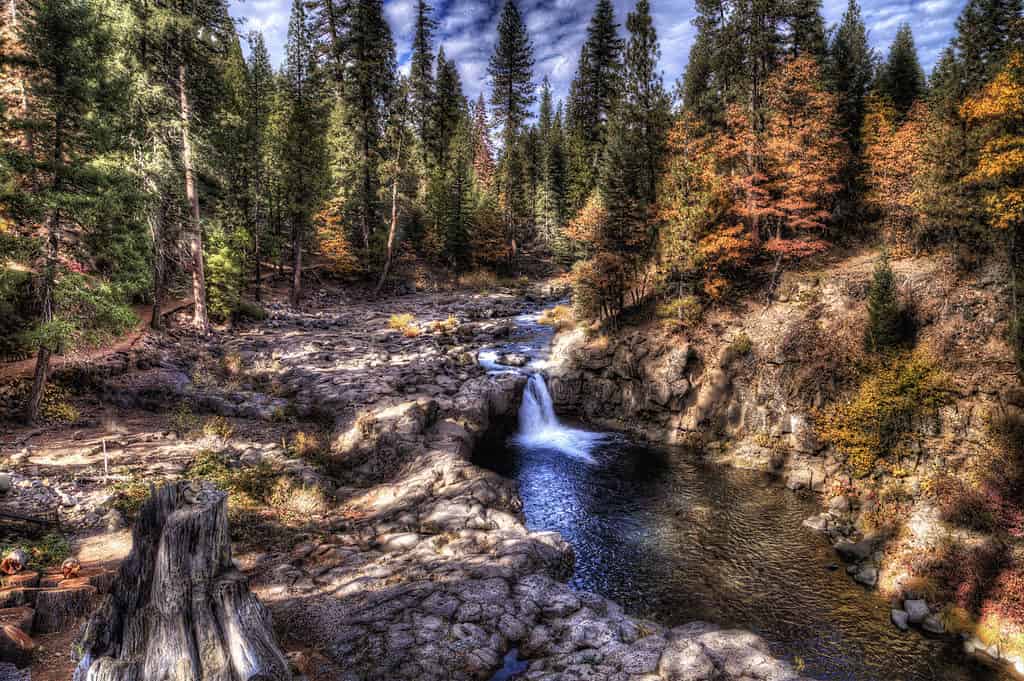
McCloud Waterfall near the town of McCloud is likely to be a great spot for foraging.
©Dennis Adams Creations/Shutterstock.com
California is home to many great locations to find mushrooms as well, including in McCloud, where the annual Mushroom and Music Festival is held each Memorial Day weekend to celebrate the town’s history as a lumber town, the beauty of the area, and, of course, mushrooms. During the festival, Todd Spanier, nicknamed the “King of Mushrooms,” leads mushroom workshops and foraging groups. Plus, there’s a multi-course gourmet mushroom-focused dinner. You’ll even find mushroom ice cream at the festival, which folks say tastes like molasses.
Find Porcini, shaggy manes, puffballs, boletes, morels, and golden chantarelles in McCloud.
11. San Francisco Bay Area

The San Francisco Bay area is rife with foraging opportunities.
©Engel Ching/Shutterstock.com
Another top spot in California for finding mushrooms shouldn’t be any surprise: San Francisco Bay area. There are many fungi-hunting groups and societies in the area as well, so join in with groups like the Bay Area Mycological Society or the Fungus Federation of Santa Cruz to find your best fungi-hunting zones.
Some of the most popular spots for foraging include Salt Point State Park, Big Basin Redwoods State Park, and the Point Reyes National Seashore. You’ll likely find chantarelles, amanitas, russulas, and boletes.
12. Central Park, New York City

Central Park is full of wild mushrooms, both edible and poisonous.
©TierneyMJ/Shutterstock.com
It’s not just small towns and countryside locations that offer some amazing mushroom hunting opportunities. Central Park in New York City is a forager’s paradise! The 800 acres boast of something like 25,000 trees, many of which are oak, and happily the home of many mushroom species. The New York Mycological Society has actually reported over 400 species of fungi in the park, including polypores, chantarelles, ascomycetes, crust fungi, and more.
13. Ithaca, New York
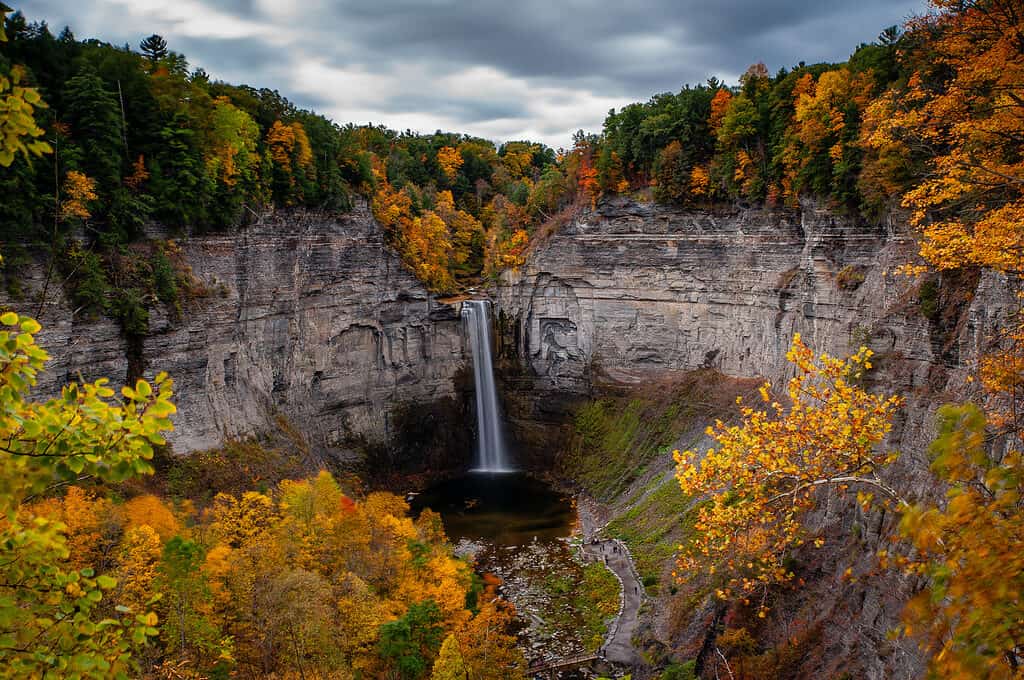
Ithaca is surrounded by many lush areas perfect for mushrooms.
©The American Explorer/Shutterstock.com
The Cornell Mushroom Club finds its home in Ithaca, New York, and celebrates the wonders of foraging through the Finger Lakes region where many species can be found. The prime seasons for foraging here are late fall through the earliest snowfalls, particularly around the spruce and oak trees in the region. In the spring, though, you’ll find morels, and king boletes and chantarelles in the summer. You’ll find other species, as well, including:
- Chicken of the Woods
- Bear head’s tooth
- Hen of the woods
- Giant puffball
- Golden chantarelle
- Oyster
Bonus Regions
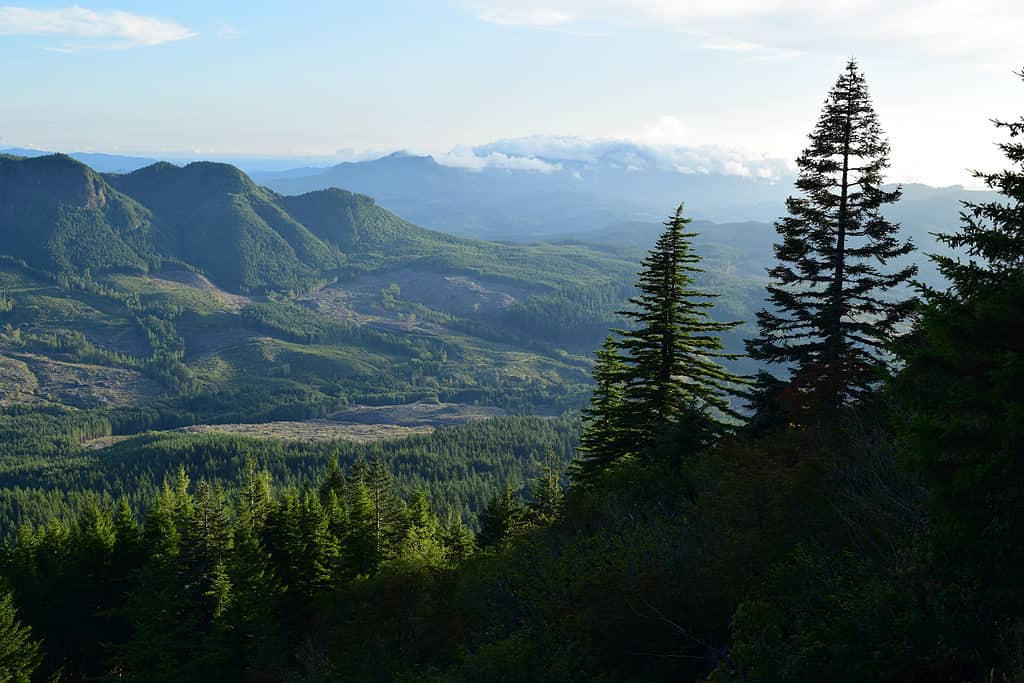
Saddle Mountain is a prime location in the PNW for mushroom foraging.
©Cheryl Zion/Shutterstock.com
Regions of the Pacific Northwest are deemed the top choice locations in all of the United States for finding mushrooms in the wild. These top regions may spread across state lines and primarily focus on wooded hiking trails.
- Saddle Mountain
- Opal Creek Wilderness
- Sweet Creek
- King’s Mountain
- Boulder River Trail
- Salmon River, Old Trail
- Oyster Dome
- Franklin Falls Trail
Summary Of The 13 Best Places To Find Mushrooms
| Rank | Best Place To Find Mushrooms |
|---|---|
| 1 | Ocala, Florida |
| 2 | West Chester, Pennsylvania |
| 3 | Asheville, North Carolina |
| 4 | Olympia, Washington |
| 5 | Chesterfield, Missouri |
| 6 | Willamette Valley, Oregon |
| 7 | Catskills, New York |
| 8 | Hot Springs, North Carolina |
| 9 | Weyerhaeuser, Wisconsin |
| 10 | McCloud, California |
| 11 | San Fransisco Bay Area, California |
| 12 | Central Park, New York City |
| 13 | Ithaca, New York |
The information presented on or through the Website is made available solely for general informational purposes. We do not warrant the accuracy, completeness, or usefulness of this information. Any reliance you place on such information is strictly at your own risk. We disclaim all liability and responsibility arising from any reliance placed on such materials by you or any other visitor to the Website, or by anyone who may be informed of any of its contents. None of the statements or claims on the Website should be taken as medical advice, health advice, or as confirmation that a plant, fungus, or other item is safe for consumption or will provide any health benefits. Anyone considering the health benefits of particular plant, fungus, or other item should first consult with a doctor or other medical professional. The statements made within this Website have not been evaluated by the Food and Drug Administration. These statements are not intended to diagnose, treat, cure or prevent any disease.
Thank you for reading! Have some feedback for us? Contact the AZ Animals editorial team.

